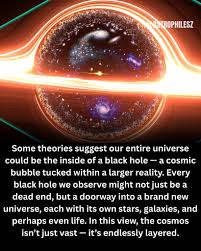Ancient Black Holes Have Revealed a Mystery at the Edge of Time and Space
The dramatic title about ancient black holes revealing a “mystery at the edge of time and space” points to a real and active area of scientific research. While there has been no single discovery that solves a grand mystery, the study of the oldest and most distant black holes is a major frontier in astronomy. These black holes are giving us new, and often puzzling, clues about how the universe evolved in its earliest stages.

One of the greatest mysteries in cosmology is the nature of dark matter, which makes up about 85% of the universe’s mass. One intriguing theory is that dark matter could be made of primordial black holes. These hypothetical black holes would have formed in the first fraction of a second after the Big Bang, well before stars or galaxies ever existed. Unlike black holes from collapsed stars, primordial black holes could be tiny, and if they exist in large numbers, they could account for the universe’s missing mass. Scientists haven’t found definitive proof of them yet, but the search for these “ancient” black holes is ongoing and could solve one of the biggest puzzles in physics.

Another way that “ancient black holes” are revealing mysteries is through direct observation. The James Webb Space Telescope (JWST) is giving us an unprecedented look back in time, allowing us to see galaxies and black holes as they were just a few hundred million years after the Big Bang. What JWST has found is truly shocking: many of these early galaxies already host supermassive black holes far larger than our current models predict could have formed so quickly. . This discovery challenges our understanding of cosmic evolution. How did these black holes grow so fast, and did they play a role in kickstarting the formation of their host galaxies? This puzzle suggests that there’s a fundamental gap in our knowledge of how the universe’s most massive objects and structures came to be.
